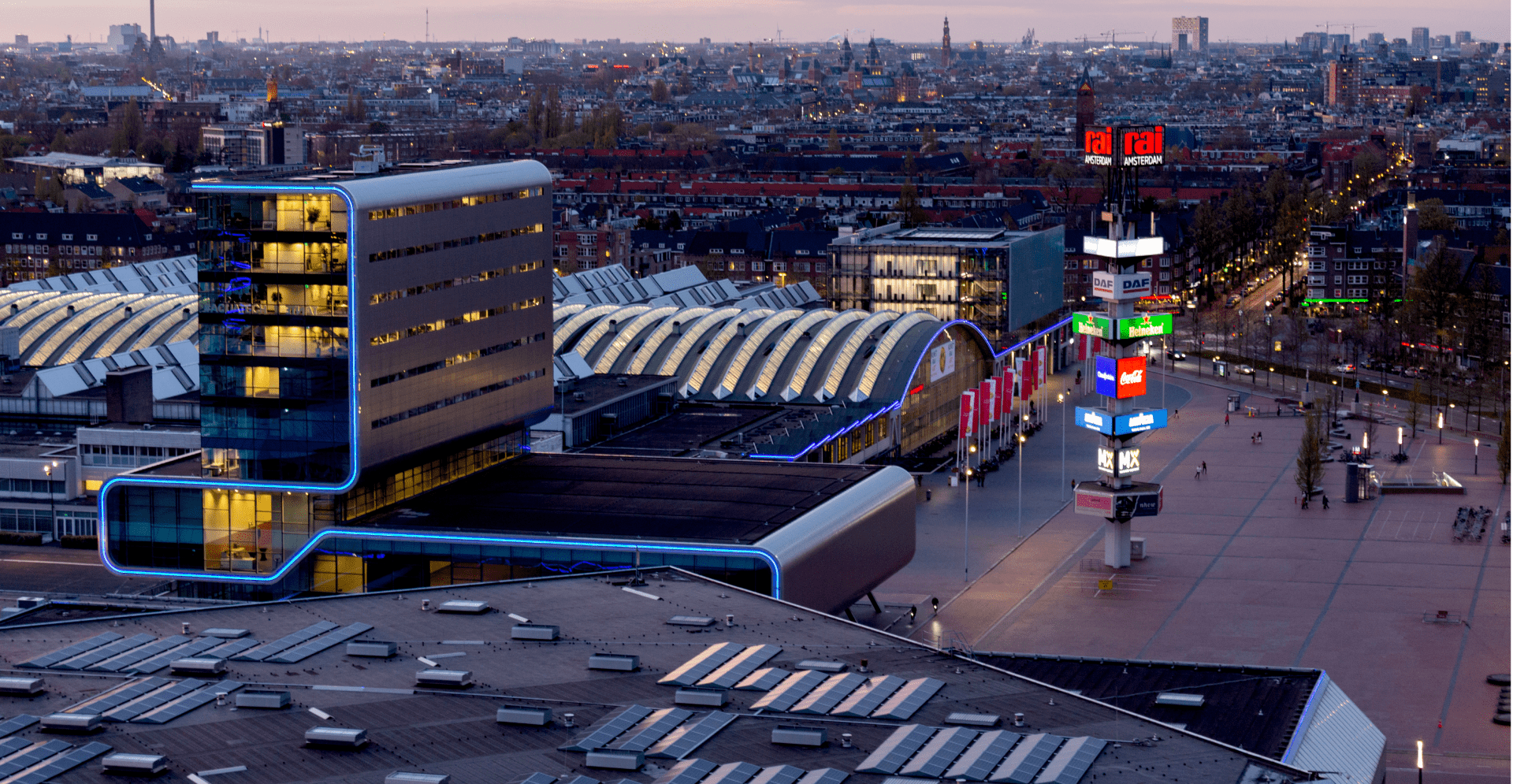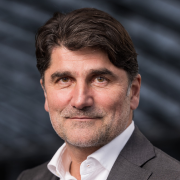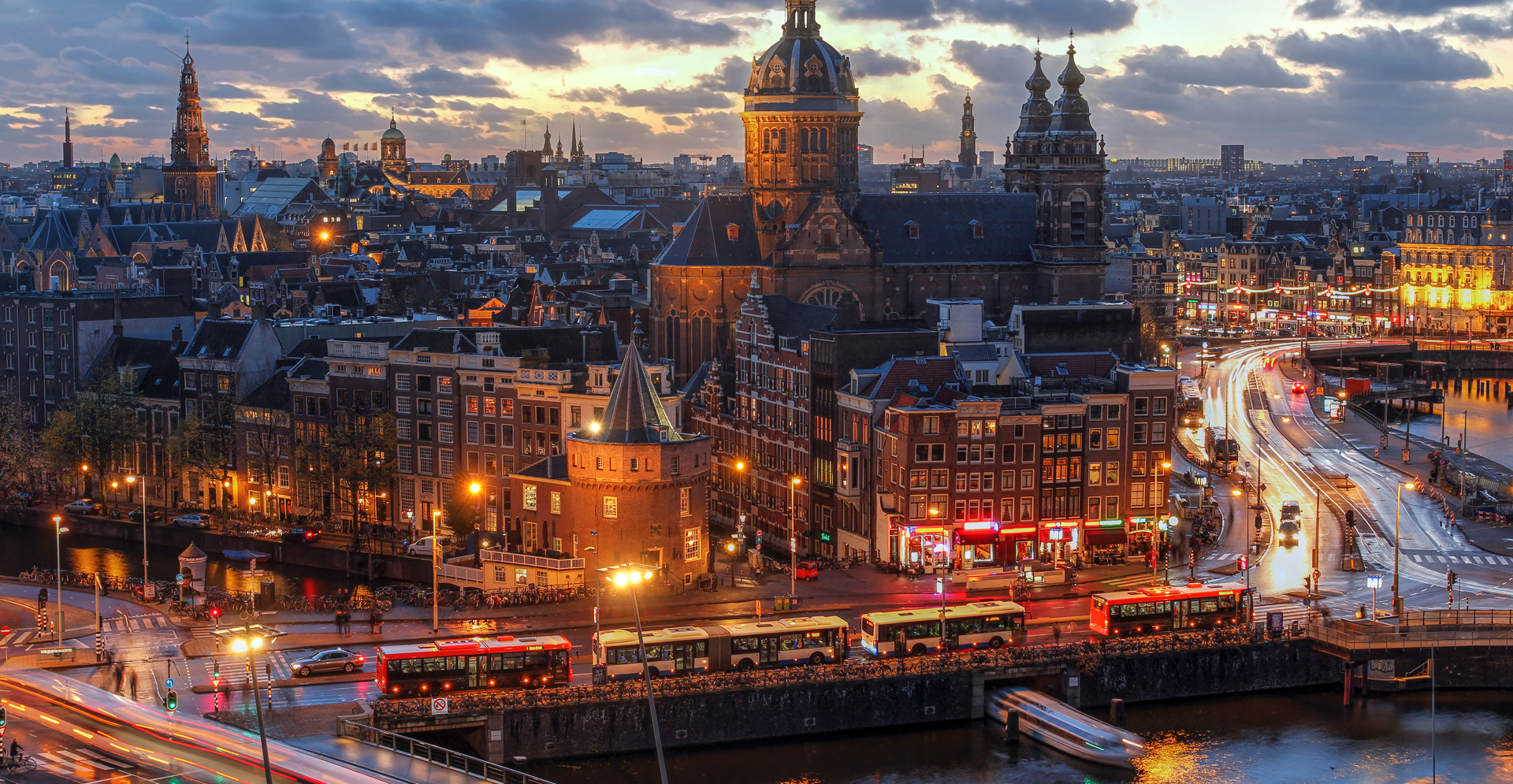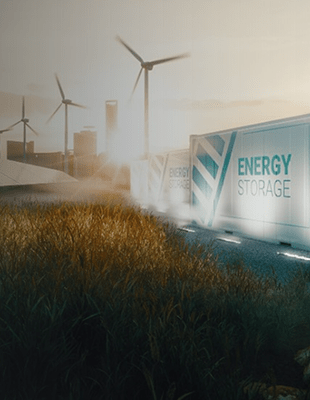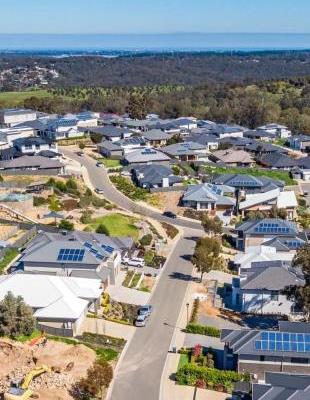Table of Contents
The challenge
The RAI must evolve to hit climate targets, supporting the city’s 2050 climate neutral goals. Planning for transformation while maximizing sustainability is key.
70,000
RAI Amsterdam is a convention center located in a dense part of the city’s business district, hosting 500 events a year. It is a massive employer and contributor to the economy; every euro spent here translates to another seven for the city. But from energy requirements to the every-day effects of event logistics, the carbon footprint is significant.
As a key cultural and economic fixture in the city, the RAI is fully committed to Amsterdam’s climate and carbon reduction goals. It has future plans to make the complex in Amsterdam Zuid more integrated with the city and to reshape convention logistics - especially the supply and removal of exhibition materials. The convention center wants to bring logistics underground, with a tunnel connecting all the halls to an underground trans-shipment center and the outside world. Together with the municipality, the RAI is also looking whether they can realize housing and offices on the site.
This creates a natural moment to tackle the sustainability challenges that converge in the area and the rest of the city. Looking to seize opportunities to continue its own development in the most sustainable way, the RAI needed a strategy to signal the best course for transforming energy use and carbon emissions, radically improving integration with the immediate surroundings, and future-proofing the center for decades to come.
The solution
With partners, we developed an integrated vision and preliminary design for the RAI and surroundings, addressing challenges like heat transition, electrification and mobility.
25
Our solution was to develop, in co-creation with other organizations, a sustainability vision that is part of The Masterplan RAI 2030. The plan encompasses details of its development as a facility, and its journey to carbon neutrality, eventually leading to a self-sufficient energy system. At the forefront is the concept of future-proofing – considering energy, mobility, logistics, climate resilience, heating and cooling, and biodiversity – adding to the RAI’s sustainability credentials and ensuring the center continues to adapt to new challenges and future changes.
To achieve this, The Masterplan offers a host of ideas to transform the way the RAI operates, while keeping its core business operational: exhibitions, conventions and meetings, including the construction of an underground network of tunnels and a logistics center, to remove traffic from the surrounding roads. This would also free up space for new housing and office developments to blend in with the convention infrastructure, resulting in a more multi-functional neighborhood.
Better integration with surrounding communities is desirable, but changing the makeup of the area also presents an opportunity for sharing resources. Examples include setting up a smart grid with a battery system to maximize the use of available renewable energy, and adding more green space for livability and biodiversity. These steps will help the RAI contribute to and blend into the urban fabric of Amsterdam, improving the way it relates to the whole city.
To develop an urban energy system as part of the Masterplan, our team fulfills multiple roles: project manager, system integrator and content sparring partner. This included bringing together various stakeholders, such as Shell, Vattenfall, the City of Amsterdam, the Zuidas District, Rabobank and Waternet, who will be key players in realizing such a bold transformation. Their input will be crucial in realizing ideas to maximizing sustainability – including heating and cooling systems, mobility and logistical solutions, making the area climate resilient, renewable energy transitions and biodiversity preservation. Considering and including a range of solutions and partners in an integrated way is crucial in ensuring the RAI will have the ability to adapt continually and indefinitely.

The impact
Sustainability will be improved, with the RAI becoming an integral part of the city – with multifunctional facilities for people to work, live, learn and innovate.
1
The power of this approach and its realization lies in the complete transformation of how the RAI will look, feel and operate. This goes far beyond a clever suite of updates to improve the sustainability credentials of an important economic fixture in need of a bit of an update. This is a vision for an evolution: from an isolated conference center to a new, thriving neighborhood where people will want to live and work.
It will become a well-integrated and desirable corner of Amsterdam, which could serve as a great example for other parts of the city in terms of meeting climate goals and setting themselves up for a sustainable future.
Not done reading?
This also might be interesting for you
- Related Projects
- Related Insights
- Related Blogs
